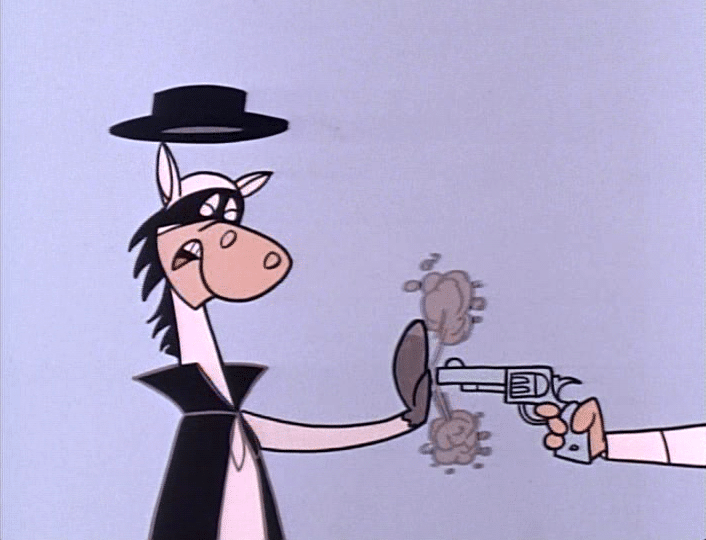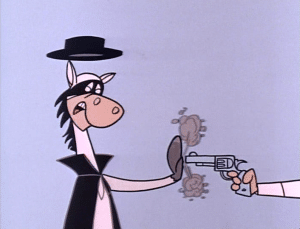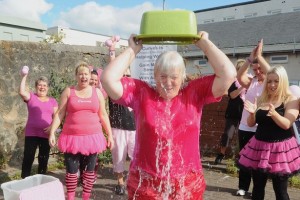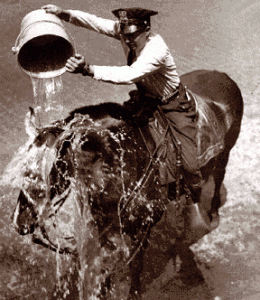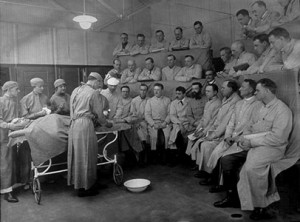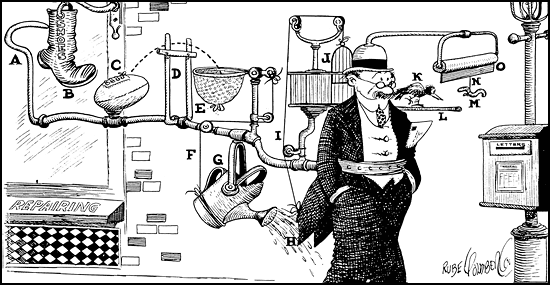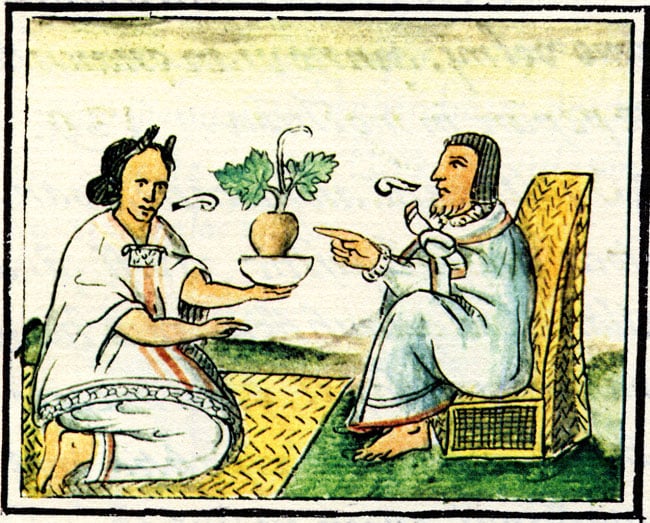Short article, right?
Wait, there’s more! Let’s talk about some of the wonderful ways that you can use bleach around your horse. Bleach fits three wonderful criteria for something that you want to have in your tackroom because it’s:
- Cheap
- Very effective
- Useful for lots of things
How much stuff like that do you have (heck, anywhere)?
First, an introduction. Sodium hypochlorite. You know it well. It’s bleach. Common household bleach is a solution of sodium hypochlorite, so, chemically speaking, it’s made up of sodium, chlorine (sodium and chlorine make common table salt), and oxygen. There are actually several kinds of bleach, but we’re talking about the bleach that you can buy, well, just about everywhere. Common household bleach is 5.25% sodium hypochlorite, and the rest is water. You can buy more concentrated bleach – up to 8.25% sodium hypochlorite, but so that we’re all on the same page, let’s talk about the less concentrated stuff.
QUICK HISTORY LESSON: Modern household bleach comes to use as the result of several scientists from the 18th century. A Swedish chemist named Carl Wilhelm Scheele discovered chlorine, and a Frenchman, Claude Berthollet, realized that chlorine could bleach fabrics. He made the first bleach solution, and he named it after a quarter in Paris where it was made, Javel. Another Frenchman, Antoine Germain Labarraque, discovered that hypocholorites were disinfecting agents. The United States was not much doing science at the time, being involved in a spat with Great Britain over independence or something. Regardless, bleach has been with us for a long time.
Bleach works for one reason. It is extremely reactive with other molecules. It doesn’t kill microorganisms, such as bacteria, in the way that biologic agents such as antibiotics do. Bleach is more straightforward. It just reacts with the bugs (especially their proteins) and destroys them. In some cases, bleach messes up the cell membrane of bacteria, resulting in the bacteria sort of popping, like a balloon. Bleach kills just about everything in comes in contact with.
Which is why you need it in your tack room.
So, here’s a list of great things that you can do with bleach around your horse. But first –
TWO QUICK SAFETY NOTES
1. Always make sure you handle bleach carefully. Even though you can buy it everywhere, and it has many uses, bleach is not benign stuff. Don’t get it in your eyes, because it can mess up your cornea (the covering of your eye). Undiluted, it can irritate your skin. And don’t get it on your colored clothes unless you like white spots on them.
2. Don’t mix bleach and ammonia. Nasty chemical reaction.
USES FOR BLEACH AROUND THE BARN
1. To treat your horse’s hoof. Bleach is a super treatment for thrush, or as a general disinfectant for the bottom of the hoof. Dilute it in water first – 1 cup of bleach to a gallon of water. Clean the horse’s hoof out well, and then slosh on some bleach.
QUICK TIP ON HOOF CLEANING: Get a wire brush. You can get them at a hardware store, or one of those big home improvement chains. They come in assorted sizes, down to about the size of a tooth brush. Spend a little extra time after you use a hoof pick and use the wire brush to remove loose dirt, debris, and even shedding sole and frog. Great hoof hygiene. Then bleach.
2. To rinse down the stall. Want to disinfect your horse’s stall? Moving into a new stall at a boarding facility? Worried that there’s some bug running through your horse’s barn, and you want to clean up the area? Use bleach! Use a cup of bleach in a gallon of water, and put it in a garden sprayer. Rinse down the stall, and you’ll kill lots of bugs.
QUICK TIP ON STALL DISINFECTION: Get the loose debris out of the stall, area, barn, etc., out first. Bleach is great stuff, but it’s not magic. A light spray of dilute bleach won’t soak through the straw or shavings on the floor, and won’t penetrate layers of dust, dirt, or manure. Use a bit of elbow grease, before you start spraying.
3. To treat your horse’s skin and coat. Yep, bleach. Dilute bleach solution is a wonderful way to treat common skin infections, such as rain rot, scratches, or even fungal infections, like ringworm. Give your horse a good, thorough bath with a disinfectant shampoo (there are lots), let the soap stay on for a few minutes, then rinse him clean and scrape off the excess water. Add – you guessed it – a cup of bleach to a gallon of water, and spray or sponge him down. Let the bleach dry on him – it will work even better! Check with your veterinarian, of course, before starting any treatment on your horse.
QUICK TIP(S) ON TREATING SKIN INFECTIONS: 1) Wear protective gloves. Some horse skin infections, such as ringworm, can infect your skin, too, 2) If you want to be a little more economical, you can use the garden sprayer that you bought to disinfect the stall, to spray down your horse, too (save money and go something good, right)!
4. Disinfecting boots, bits, bridles. brushes, tools, blankets, etc. Yep, a cup of bleach to a gallon of water makes a great dip for the bottom of your boots, your bits, your brushes, your hoof picks, and pretty much anything else you want to disinfect.
QUICK TIP ON DISINFECTANT DIPS. Make it up fresh. There are few things more disgusting than a tub of dirty disinfectant water. Like I said, bleach is good, but it’s not magic, and it will degrade fairly quickly.
5. Wound treatment. “What?” you say. “Not wounds, too!”
Yep, wounds, too.
Dakin’s solution has been used to treat wounds since World War 1 (seriously). An English chemist, Henry Drysdale Dakin (you can see where the solution got it’s name, I hope), and a French surgeon, Alexis Carrel (who knew that the French were so integral to bleach?) were looking for an ideal wound antiseptic that didn’t lose potency in blood, and didn’t kill cells. Their solution? The solution! They treated wounds by periodically flooding the surface of wounds with the a solution that is basically just dilute bleach.
RECIPE? But of course. Think I’d just tease you by putting this stuff out there and not telling you how to make it? Here’s one place that will tell you how – CLICK HERE. I’d recommend that you use the half strength stuff, but, of course, you should check with your vet before you treat any wounds on your horse.
 QUICK TIP(S) ON WOUND TREATMENT SOLUTION: 1) You can use distilled water to make Dakin’s solution so you don’t have to boil water all the time. This also makes it easier if you can’t cook. 2) You shouldn’t store Dakin’s solution for more than a few days, because, like all bleach solutions, it tends to break down 3) When you do store it for a few days, keep it out of the heat, and in the dark.
QUICK TIP(S) ON WOUND TREATMENT SOLUTION: 1) You can use distilled water to make Dakin’s solution so you don’t have to boil water all the time. This also makes it easier if you can’t cook. 2) You shouldn’t store Dakin’s solution for more than a few days, because, like all bleach solutions, it tends to break down 3) When you do store it for a few days, keep it out of the heat, and in the dark.
ASIDE: Vetricyn®, an over-the-counter wound treatment, is pretty much just dilute bleach. You can buy a cheap bottle of bleach and make a whole lot of a very dilute bleach solution, or pay a whole lot of money for a very little bleach solution. I’ll let you do the math, but it’s a staggering savings if you just make it yourself.
AND… if you’d like to look at it, I wrote a paper about very dilute bleach solutions, and their ability to kill a couple of common bacteria in the test tube. You can see the abstract and highlights if you CLICK HERE.
6. Purifying the water. You do know that you can add bleach to water to kill stuff in the water, right? Well known emergency treatment – it’s used to purify water around the world, in emergency situations, and where sanitation is sketchy. Doesn’t take much – you just need 1 teaspoon of bleach for every 5 gallons of water, and you’ve got something that’s safe to drink, and bacteria free. It’ll help control scum in the water tank, too.
QUICK TIP ON WATER PURIFICATION: Just like stalls, and hooves, it helps to have things relatively clean before you try to disinfect them. Don’t add bleach to a mud puddle and expect it to do miracles. If you’re trying to disinfect muddy water, let the mud settle to the bottom, take the water off the top, and THEN add bleach.
EXTRA TIP ON WATER PURIFICATION! CLICK HERE to read the Washington State’s Department of Health info sheet on water purification during an emergency. I hope you never have an emergency, of course.
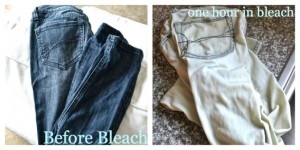 BONUS USE OF BLEACH: Take the stains out of your pants. This one’s for you, dressage crowd. Bleach, of course, is a whitening agent. It’s a whitening agent because it breaks the chemical bonds of the colored parts of molecules, so that it either has no color, or it can’t reflect color that you can see (that is, color in the visible light spectrum). So, follow the manufacturer’s directions, and don’t forget to bleach before your next pirouette!
BONUS USE OF BLEACH: Take the stains out of your pants. This one’s for you, dressage crowd. Bleach, of course, is a whitening agent. It’s a whitening agent because it breaks the chemical bonds of the colored parts of molecules, so that it either has no color, or it can’t reflect color that you can see (that is, color in the visible light spectrum). So, follow the manufacturer’s directions, and don’t forget to bleach before your next pirouette!
ONE LAST THING. More is not necessarily better. Dilute bleach is a better at killing germs than is bleach that’s straight out of the bottle. Dilute it before you use it.
OH, AND ONE FINAL NOTE FOR YOU CHEMOPHOBES! Don’t worry, dilute bleach solutions are really safe, and don’t pose any threat to the environment. Liquid bleach starts as salt water, and, when it breaks down, it turns back into salt water. If you’re scared of most chemicals, this is not one that you should worry about.
Cheap, safe, and effective. What else do you want for your horse. Get some bleach!

